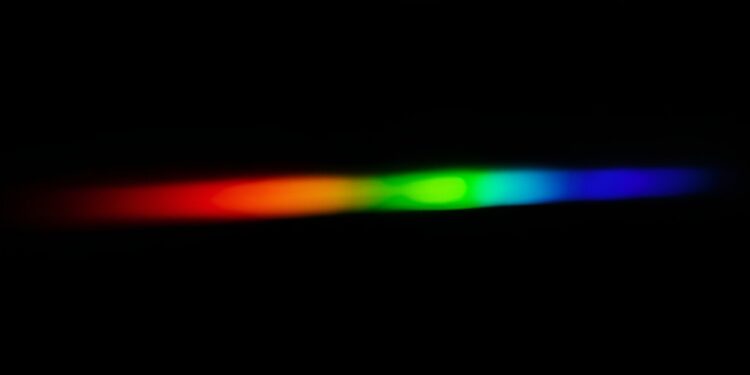An intense white light laser projects a bright rainbow, as demonstrated in a photo from experiments conducted by L. Hong’s team at the South China University of Technology. Credit: L. Hong et al., South China University of Technology.
Scientists are making significant progress in the development of ultra-broadband white laser sources, covering a broad spectrum from ultraviolet to far-infrared. These lasers find applications in various fields such as large-scale imaging, femtochemistry, telecommunications, laser spectroscopy, sensing and ultrafast science.
However, this research faces challenges, particularly in the selection of appropriate nonlinear media. Traditional solid materials, while effective, are prone to optical damage under high peak power conditions. Gaseous fluids, although resistant to damage, generally suffer from low efficiency and technical complications.
In an unconventional move, researchers at South China University of Technology recently turned to water as a nonlinear medium. Abundant and inexpensive, water proves insensitive to optical damage, even under the influence of high-power lasers. As shown in Advanced Photonics NexusWater-induced spectral broadening involves enhanced self-phase modulation and stimulated Raman scattering, resulting in a supercontinuum white laser with a bandwidth of 435 nm at 10 dB covering an impressive range of 478 to 913 nm .
To take the innovation further, the researchers combined water with a crystal of periodic pole lithium niobate (CPPLN), known for its robust second-order nonlinear power. This partnership not only expanded the frequency range of the supercontinuum white laser, but also flattened its output spectrum.
According to the corresponding lead author, Professor Zhi-Yuan Li, “the cascaded water-CPPLN module provides a long-lasting, high-stability and low-cost technical route to realize a ‘three-height’ white laser with energy of intense impulse. , high spectral flatness and ultra-wide bandwidth.
The results of this water-CPPLN collaboration are promising. With a pulse energy of 0.6 mJ and a bandwidth of 10 dB spanning over an octave (413 to 907 nm), this ultra-wideband supercontinuum source shows potential in ultrafast spectroscopy and imaging hyperspectral.
Li says: “It provides high resolution in physical, chemical and biological processes over extreme spectral bandwidths with a high signal-to-noise ratio. It opens an efficient route to create a long-lasting, high-stability and low-cost white laser. with intense pulse energy, high spectral flatness and ultra-wide bandwidth, paving the way for new possibilities in scientific research and applications.
More information:
Lihong Hong et al, Intense white laser of high spectral flatness via water-lithium niobate module without optical damage, Advanced Photonics Nexus (2024). DOI: 10.1117/1.APN.3.1.016008
Quote: Research team uses water as nonlinear medium for ultra-wideband white laser (January 16, 2024) retrieved January 16, 2024 from
This document is subject to copyright. Apart from fair use for private study or research purposes, no part may be reproduced without written permission. The content is provided for information only.



